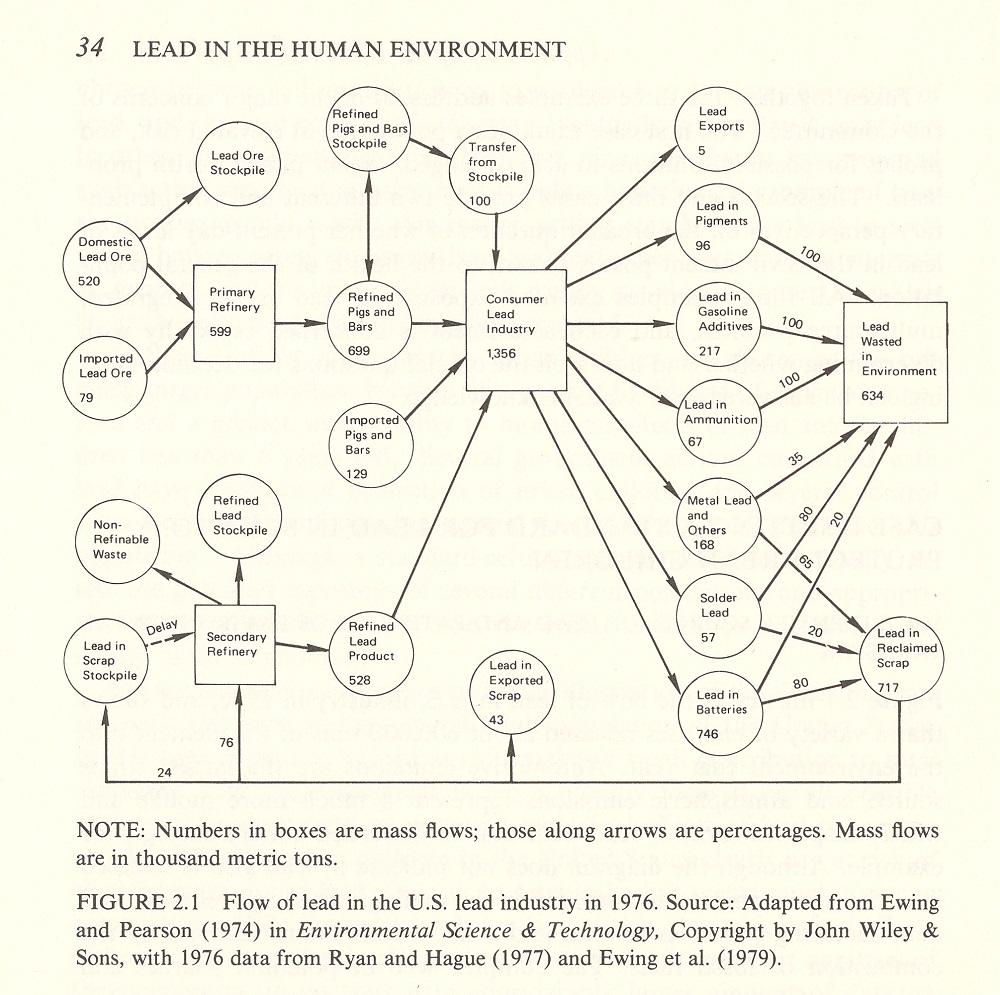The Legacy of Industrial Lead
Racialized and economically oppressed children are disproportionately poisoned by lead’s remnants in the built environment.

Racialized and economically oppressed children are disproportionately poisoned by lead’s remnants in the built environment.
On October 28, 2021, during National Lead Poisoning Prevention Week, the U.S. Centers for Disease Control and Prevention (CDC) made an announcement: the agency lowered its blood lead reference value (BLRV) for children from 5.0 to 3.5 µg/dL, thus decreasing the threshold at which the CDC recommends follow-up actions among healthcare providers, public health officials, and communities. On the same day, the U.S. Environmental Protection Agency (EPA) released its “Draft Strategy to Reduce Lead Exposures and Disparities in U.S. Communities” for public comment.
The CDC’s lowered BLRV and the EPA’s draft strategy both underscore the fact that historic dispersals of lead into the environment are an enduring problem that continues to poison children. And as a 2016 report of the President’s Task Force on Environmental Health Risks and Safety Risks to Children notes, Black children and children living below the poverty line suffer disproportionate harm.
As a 2021–2022 Haas Fellow at the Science History Institute, I used the Institute’s collections to study the history of the U.S.’s approach to regulating lead emissions into the environment and its response to lead exposure. While lead poisoning has been known since antiquity, regulation of lead in the United States only emerged in the mid-20th century. In 1980 the National Research Council (NRC) published “Lead in the Human Environment” at the request of the U.S. Department of Housing and Urban Development.
Contrary to the NRC’s earlier report, “Lead: Airborne Lead in Perspective” (1972), the 1980 report was critical of industrial lead production. Among its authors were scientists such as Clair C. Patterson and Jerome O. Nriagu, who pointed to the massive amounts of lead being put into people’s surroundings and mounting, unavoidable evidence of severe public health consequences.

Figure 2.1 of the 1980 NRC report documents material flows of industrial lead in the U.S. in 1976. Many emissions of lead into the environment are now subject to regulations that have drastically reduced the average blood lead levels of U.S. children and adults.
The most dramatic result was the gradual phase out of lead from gasoline from the 1970s to the 1990s, which was a contested issue at the time the report was published. Yet as I and my coauthors argue in a recent article, our built environment contains the hazardous remnants and residues of past uses and emissions of lead, particularly in urban and industrial areas (soil, dust) and housing (paint, plumbing, soil, and dust).
Clair C. Patterson felt that the recommendations of the 1980 report were insufficient to protect the public’s health. In Patterson’s view, there was sufficient evidence to recommend immediate steps to curb lead emissions from gasoline. There was no justification to wait for additional studies “that would permit extremely strong statements to be made about the ill effects caused by lead exposures now being received by inner-city babies” (p. 272).
Based on his work as a geochemist in measuring lead in prehistoric environmental media such as cores of Arctic ice, deep ocean water, and human remains, Patterson juxtaposed “typical” lead exposure from modern industry to exposures in pre-industrial times and the amount that constitutes clinical lead poisoning (p. 276).
![Illustration of lead comparison with three seemingly male figures. Left figure has no stipling. Middle figure has medium amount of stipling. Right figure has larges amounts of stipling. Caption reads "FIGURE 1 Comparison of relative amounts of lead in people: natural amount found in prehistoric people on left; average amount found in present-day Americans in the middle; and minimum amount which will cause classical lead poisoning in a significant fraction of a group of people on the right. Each dot represents a unit of lead equivalent to 3 X 10(minus four power)g Pb/70 kg person, based on prehistoric natural skeletal value Pb/Ca (atomic) = 6 x 10 (minus 8 power) at age 45, reference [1].](https://www.sciencehistory.org/wp-content/uploads/2023/04/alternative_perspective.jpeg)
Thus, in the 1980 report, Patterson authored an alternative perspective to the full committee, arguing that the danger of lead exposure could not be ameliorated by focusing solely on current industrial emissions:
Sometime in the near future it probably will be shown that the older urban areas of the United States have been rendered more or less uninhabitable by the millions of tons of poisonous industrial lead residues that have accumulated in cities during the past century (p. 344).
Today, the CDC has an explicit goal to end childhood lead poisoning. However, the legacy of lead persists in the built environment, particularly in urban and industrial areas as well as older homes. Existing regulations such as the EPA’s rule on “Lead-Based Paint Poisoning Prevention in Certain Residential Structures” (2019) devolve responsibility to voluntary actors. While great strides in reducing blood lead levels among people in the U.S. have been made overall, insufficient resources and the absence of a systematic approach to address lead in children’s environments disproportionately harms racialized and economically oppressed children.
Systematic action to locate persistent lead in the environment and block its routes of exposure is necessary to meet the CDC’s goal of ending lead poisoning, something that Clair Patterson called for decades ago.
Featured image: Courtesy of the Conservation Law Foundation website.
More and more digital research tools are helping to answer even the smallest collections questions.
In pursuit of something memorable and meaningless.
How does a museum and library negotiate biography, civics, and the history of science?
Copy the above HTML to republish this content. We have formatted the material to follow our guidelines, which include our credit requirements. Please review our full list of guidelines for more information. By republishing this content, you agree to our republication requirements.